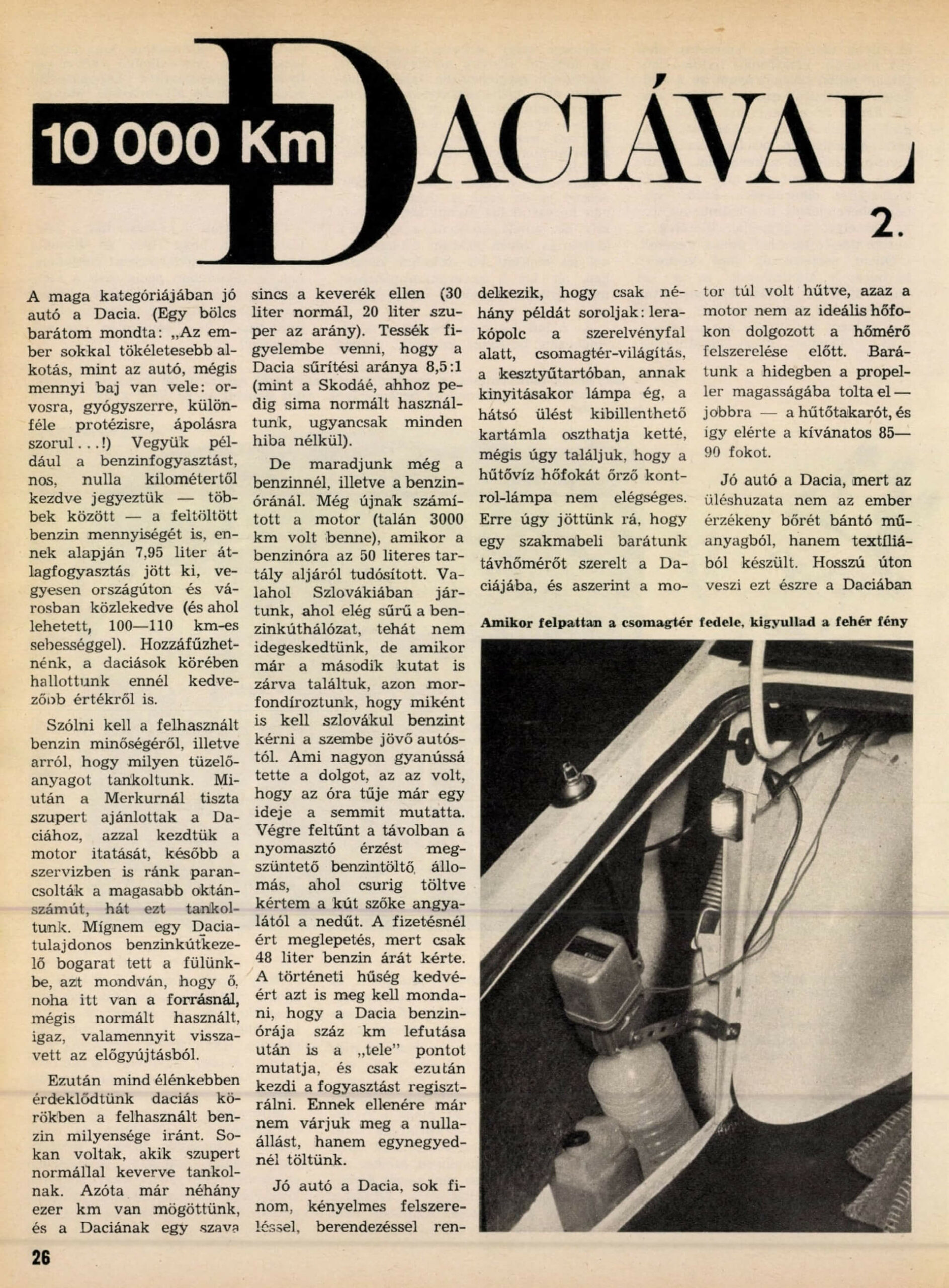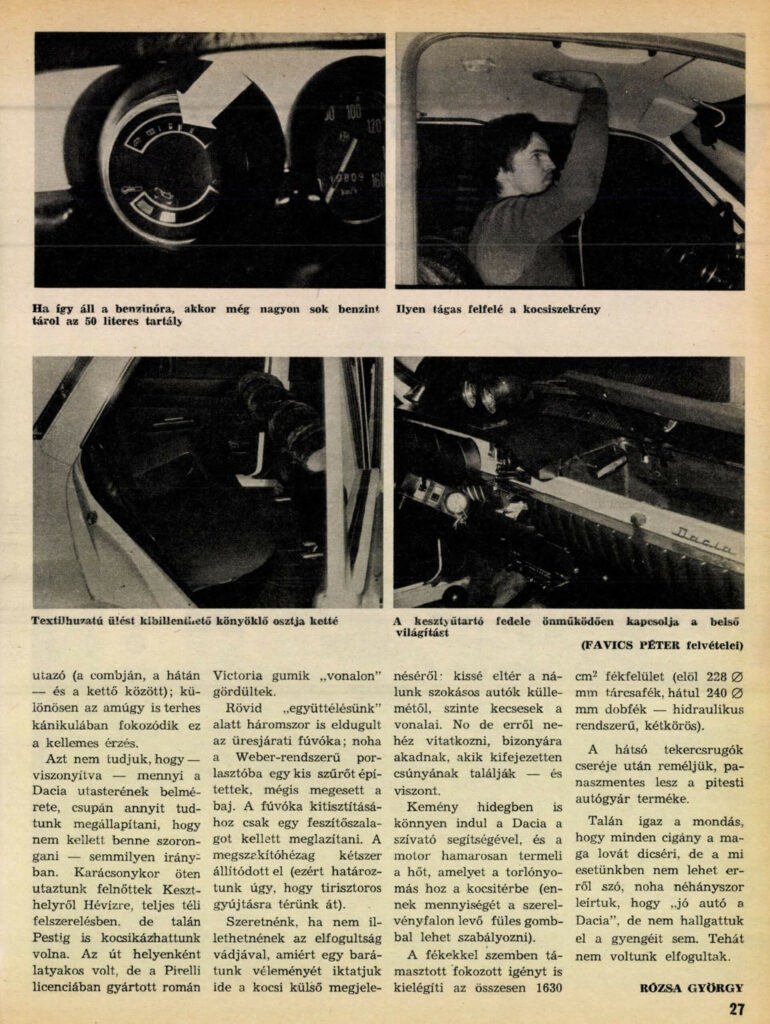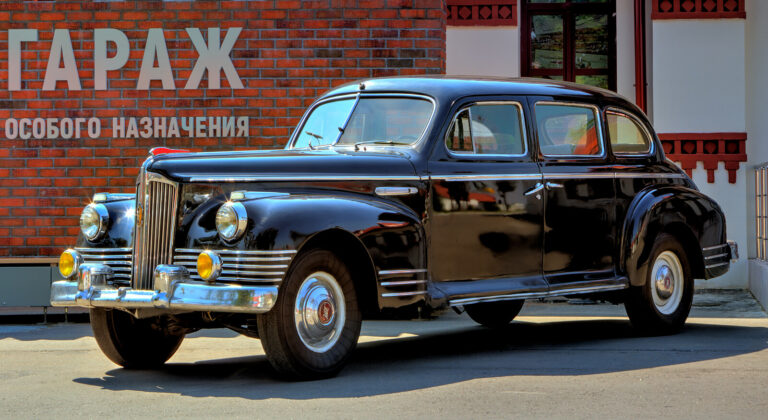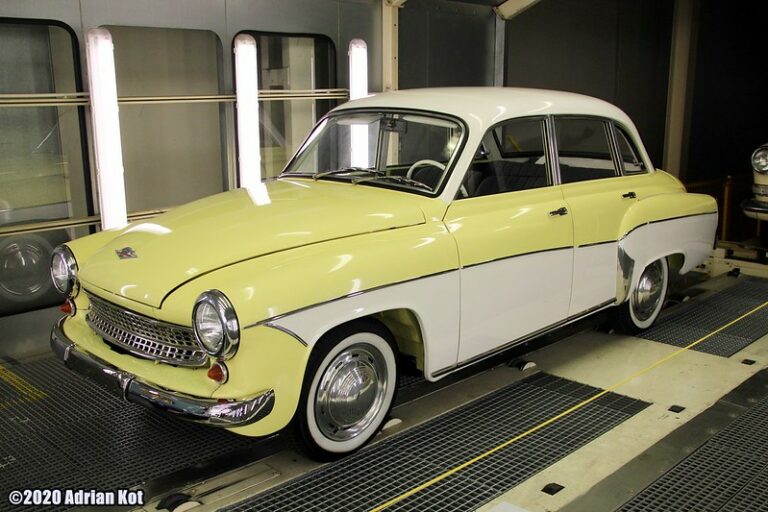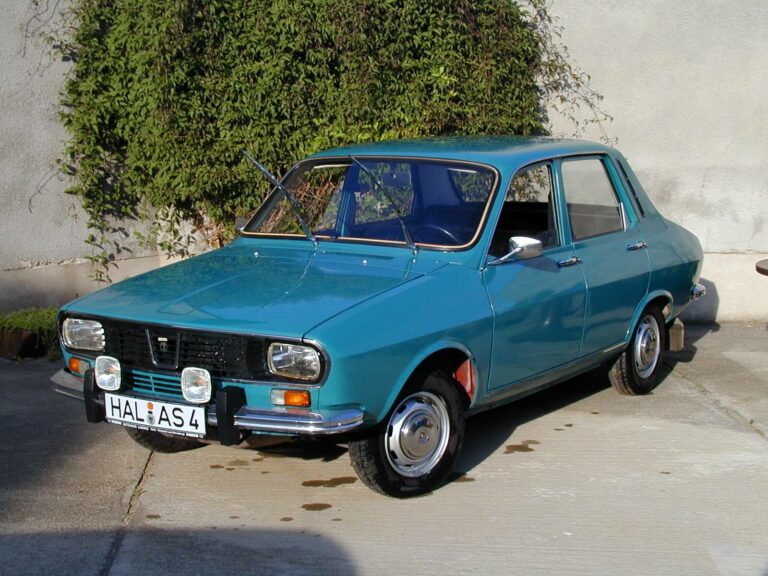1979 - 10 000 km in a Dacia 2.
Below you can read about the 10 000 km Dacia from a test drive 1979-in the Car Enginesecond part of the report published in György Rózsa from the pen. Unless otherwise indicated, the original illustration illustrating this article photos Favics Péter his works. In the gallery at the end of the post you will find - as usual - high-resolution images of the original article.
♠

The Dacia is a good car in its class. (A wise friend of mine said: "Man is a more perfect creation than the car, yet how much trouble he is in: he needs doctors, medicines, various prostheses, care...") Take the fuel consumption, for example, well, starting from zero kilometres we recorded - among other things - the amount of petrol filled, and the average consumption was 7.95 litres, mixed on the highway and in town (and where possible at 100-110 km). It might be added that we have heard of better figures among the Dacians.
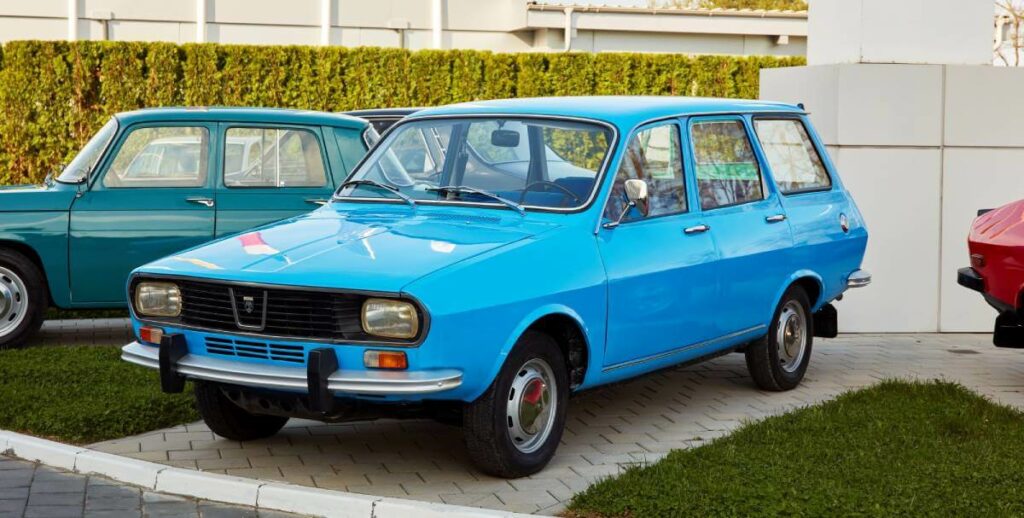
Dacia-1300 estate car from 1975 - Image source: renaultgroup.com
You must tell us about the quality of the petrol you used and what fuel you filled up with. After the Mercury recommended pure super for the Dacia, we started the engine with it, and later the service station ordered us to use higher octane, so we filled up with it. Until a Dacia owner at a petrol station put a bug in our ears, saying that although he was at the source, he used standard, although he had cut back a little on the pre-ignition.
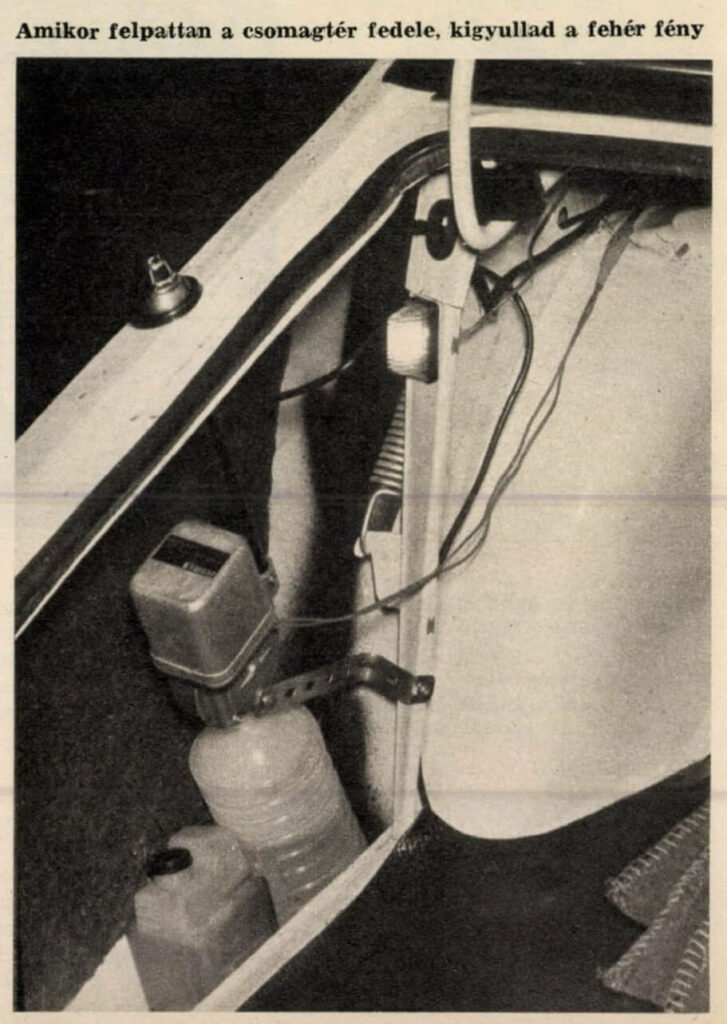
After that, we became increasingly interested in the quality of the petrol used. There were many people who used super standard. Since then, we've done a few thousand km and the Dacian hasn't a word against the blend (30 litres normal, 20 litres super is the ratio). Note that the Dacia's compression ratio is 8.5:1 (like the Skoda's, for which we used a normal standard, also without any faults).
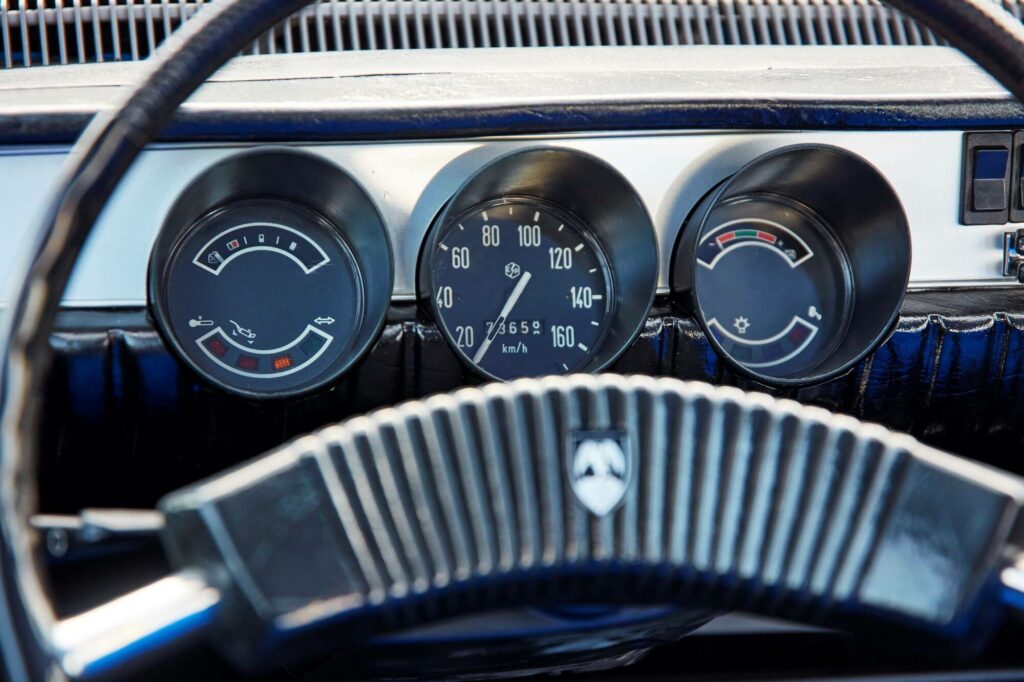
Image source: renaultgroup.com
But let's stay with petrol and the petrol meter. The engine was still new (maybe 3000 km on it) when the petrol gauge reported the bottom of the 50 litre tank. We were somewhere in Slovakia, where the petrol station network is quite dense, so we didn't get nervous, but when we found the second pump closed, we wondered how to ask for petrol in Slovakian from the oncoming driver. What made it very suspicious was that the needle on the clock had been reading nothing for some time. Finally, a petrol station appeared in the distance, where I asked the blonde angel of the well for a full tank of petrol. I was surprised when I paid, because she only charged me for 48 litres of petrol. For the sake of historical fidelity, it should also be said that the Dacia's petrol gauge still reads 'full' after 100 km and only then starts to register consumption. Nevertheless, we no longer wait for zero, but fill up at a quarter.
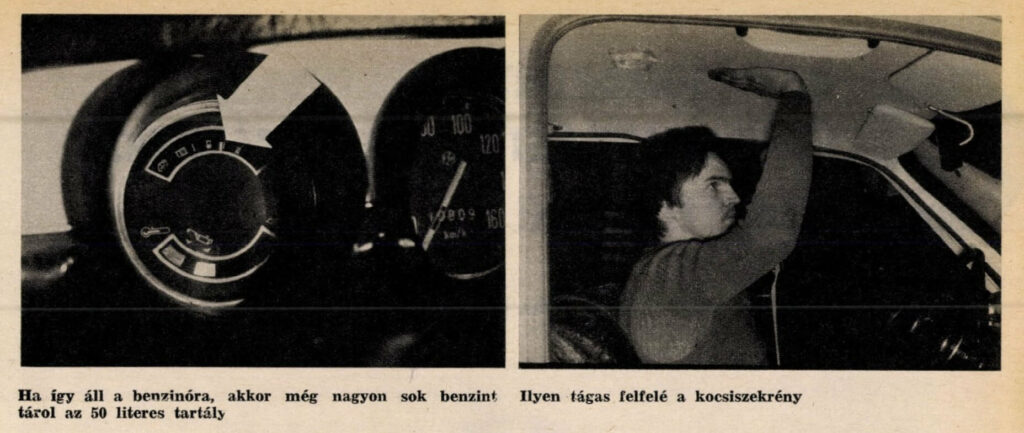
The Dacia is a good car, it has many fine, convenient equipment, to name just a few examples: a loading shelf under the dashboard, boot lighting, a light in the glove compartment when opening it, a folding armrest to divide the rear seat, but we find that the control light to keep the temperature of the cooling water is not enough. We found this out because a professional friend had fitted a thermometer to his Dacia, and it showed that the engine was overcooled, i.e. the engine was not working at the ideal temperature before the thermometer was fitted. In the cold, our friend moved the radiator cover to the right, to the height of the propeller, and achieved the desired 85 - 90 degrees.
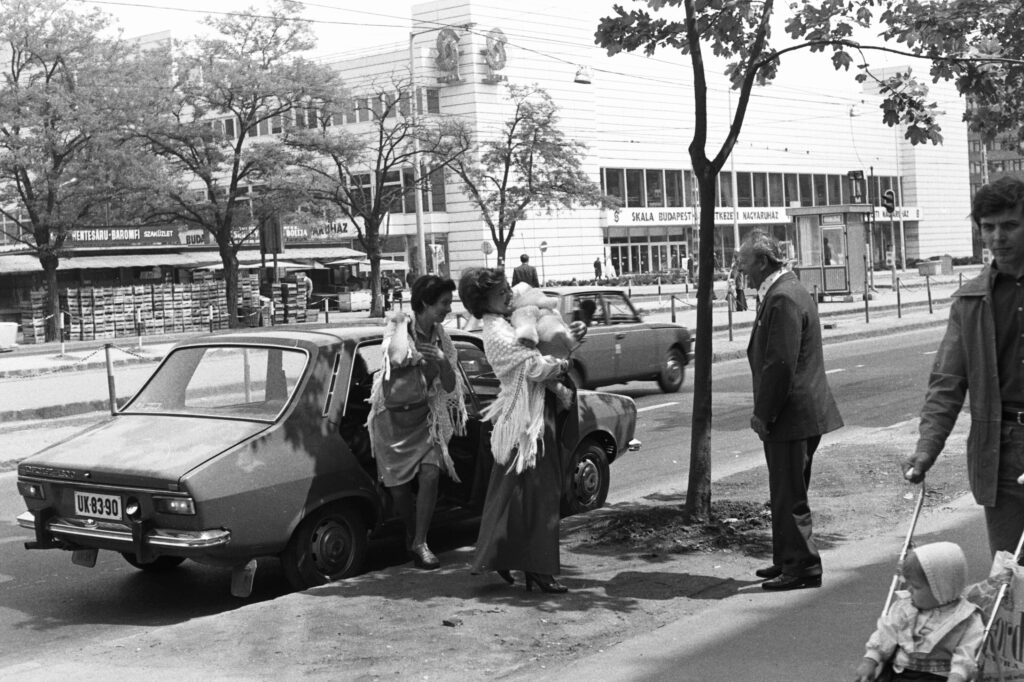
Hungary, 1981, Budapest XI Október huszonharmadika (Schönherz Zoltán) utca, opposite the Skála Budapest Cooperative Wholesale Store - Image source: fortepan 134284 / Chuckyeager tumblr
The Dacia is a good car because the seat cover is made of textile, not plastic, which is a nuisance to your sensitive skin. You notice this on long journeys (on your thighs, on your back and in between), and it's a particularly pleasant sensation in the already oppressive heat.
We don't know what the interior dimensions of the Dacia are in comparison, but all we could find out is that it was not cramped in any direction. At Christmas, five of us adults travelled from Keszthely to Hévíz in full winter gear, but we could have driven as far as Pest. The road was bumpy in places, but the Pirelli licensed Romanian Victoria tyres were rolling "on the line".
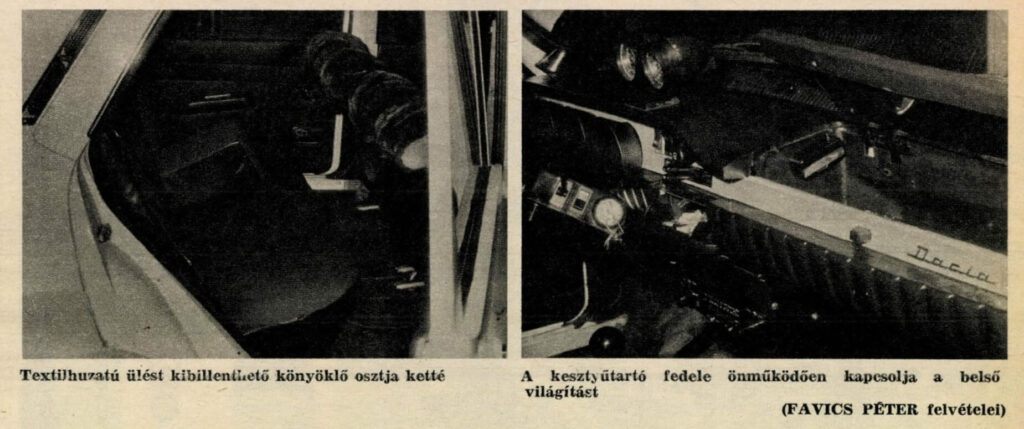
During our short "life together", the idle nozzle clogged three times; even though a small filter was built into the Weber-type carburettor, the problem still happened. All that was needed to clean the nozzle was to loosen a tension band. The circuit breaker gap had stopped twice (which is why we decided to switch to thyristor ignition).
We don't want to be accused of bias for including here a friend's opinion on the car's appearance: it's a bit different from the cars we're used to, with almost graceful lines. But it's hard to argue with that, there are certainly those who find it downright ugly - and vice versa.
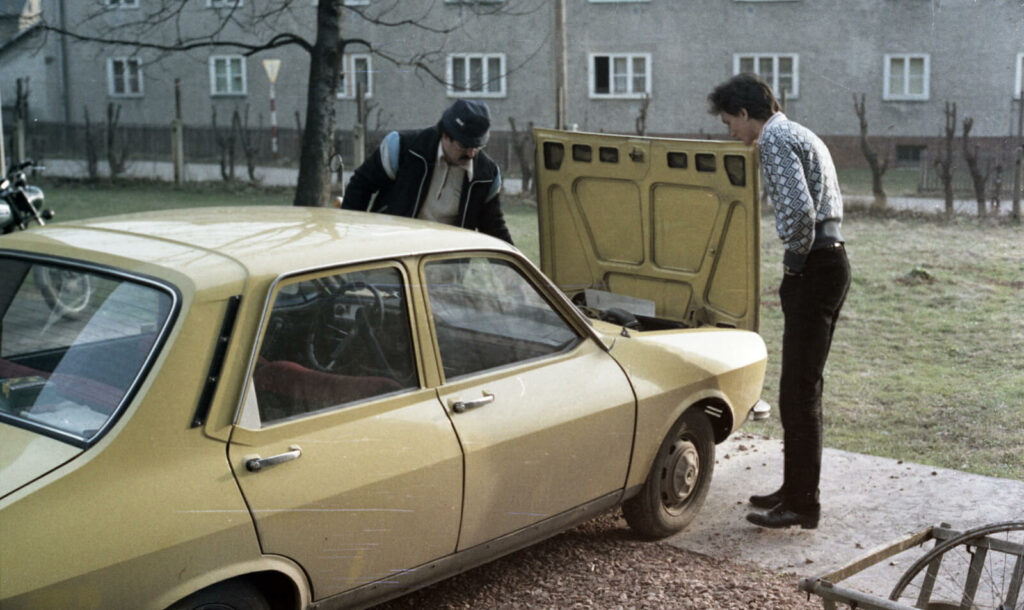
Even in harsh cold, the Dacia starts easily with the pulley, and the engine quickly generates heat, which is brought into the cabin by the torque (the amount of heat can be controlled by a knob on the dashboard).
The total braking surface area of 1630 cm² (228 Ø mm disc brakes at the front, 240 Ø mm drum brakes at the rear - hydraulic system, dual circuit) also meets the increased demands on the brakes. After the replacement of the rear coil springs, we hope that the Pitesti car manufacturer's product will be free of complaints. Perhaps the saying that every gypsy praises his own horse is true, but in our case this cannot be the case, although we have written a few times that "Dacia is a good car", but we have not silenced its weaknesses. So we were not biased.
GYÖRGY RÓZSA
